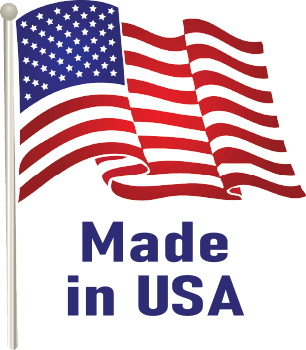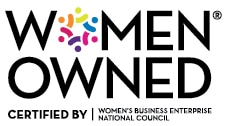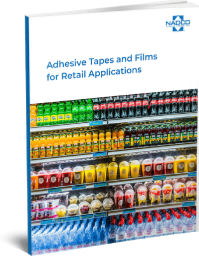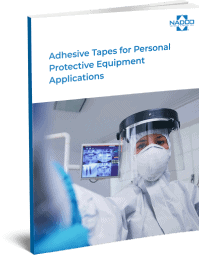Industry Definitions
Leave a CommentNADCO®, like most companies, has industry terms and jargon, but what does it all mean? What does it mean to have your label kiss-cut versus die-cut? Or the 4-Color Process versus the 7 Spot Color Printing Process? Below you will find many of our industry terms and their definitions:
Pressure-Sensitive Adhesive: If an adhesive is pressure-sensitive it means that the adhesive will form a bond when pressure is applied to have the adhesive adhere to the selected surface.
Spot Color Printing: Spot coloring is any one color created by an ink that is printed using a single specific pantone color. This process is normally used when the label design calls for a specific color or the design doesn’t have complex shading.
4-Color Process: This process is the mixture of 4-colors (Cyan, Magenta, Yellow, and Key (Black)) to create different colors and shades. This is used when the label design calls for several different colors and complex shading.
Die-Cut: Much like a cookie cutter, a die cut is used to cut the label into irregular shapes and leaves a matrix of liner exposed around the label.
Kiss-Cut: If a label is kiss-cut, it means that the top layer was cut to the liner below and no matrix of exposed liner is left behind.
Flexographic Printing: This process utilizes a flexible relief plate and that plate is rotated on a cylinder and involves a series of rollers transferring and metering the ink. Essentially it is a more modern version of the original letterpress printing process.
Digital Printing: This printer process deposits toner, in some cases, onto the substrate (material); basically the toner forms a thin layer on the surface through a heating process.
Foil Stamping: This is the application of metallic film or foil onto a surface by applying a heated dye or adhesive (cold foil) which makes it permanently adhere to the surface below leaving the design desired.
The difference between our Anti-Slip Tapes.
Leave a Comment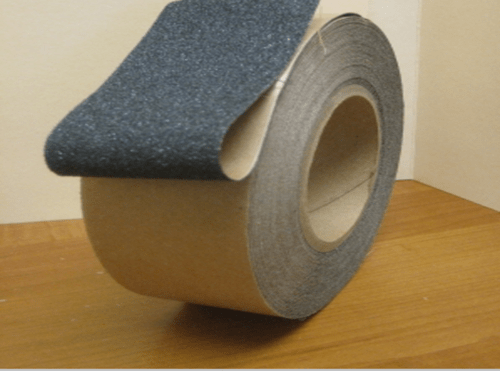 Anti-Slip Tape is an extra precaution in accident prone locations, like ladders, decks, ramps, bathtubs and stairs. These materials are made to last an extended period of time and exceed many OSHA standards. At NADCO® we offer different styles of safety tracks to meet the needs of any customer who is trying to improve their building, house or even boat safety. The real question though is how to decide which anti-slip product is right for you. Online you will find that our Anti-Slip products are listed as 3420 Glo-Brite Safety Track Tape, 188 Vinyl Anti-Slip Tape, 189 Grit Safety Tape and 189 Y-B Yellow and Black Anti-Slip Grit Tape, but what are the real differences between each product?
Anti-Slip Tape is an extra precaution in accident prone locations, like ladders, decks, ramps, bathtubs and stairs. These materials are made to last an extended period of time and exceed many OSHA standards. At NADCO® we offer different styles of safety tracks to meet the needs of any customer who is trying to improve their building, house or even boat safety. The real question though is how to decide which anti-slip product is right for you. Online you will find that our Anti-Slip products are listed as 3420 Glo-Brite Safety Track Tape, 188 Vinyl Anti-Slip Tape, 189 Grit Safety Tape and 189 Y-B Yellow and Black Anti-Slip Grit Tape, but what are the real differences between each product?
3420 Glo-Brite Safety Track Tape: 3420 is designed for emergency situations, this product is a non-skid, mineral-coated, glow in the dark tape that provides protection on hazardous surfaces. This anti-slip tape absorbs and stores energy from ambient light and becomes instantly visible in the event of darkness. The mineral-coating appears coarse and is normally used in areas where users would be wearing shoes, like outdoor stairs and ramps.
188 Vinyl Anti-Slip Tape: 188 is a “barefoot friendly” anti-slip tape, it is created to be used in bath-tubs or pools because it is not as coarse as the mineral-coating. The vinyl material is highly conformable and resistant to aging and a variety of corrosive chemicals. This Anti-Slip Tape has “write-on” capability and can be designed to display your colors and logo.
189 Grit Safety Tape: 189, is similar to 3420 because it is also mineral-coated and should be used in areas where the users are wearing shoes. 189, however, does not glow in the dark; it is a plastic film liner that can be customized to show your company logo.
189 Y-B Yellow and Black Anti-Slip Grit Tape: 189 Y-B is exactly like 189 with one difference, 189 Y-B has yellow and black stripes. This non-skid tape is mineral-coated and supplies excellent traction. The yellow and black stripes are perfect for marking and warning users of the hazardous area.
Click Here to learn more about our Anti-Slip Tapes.


